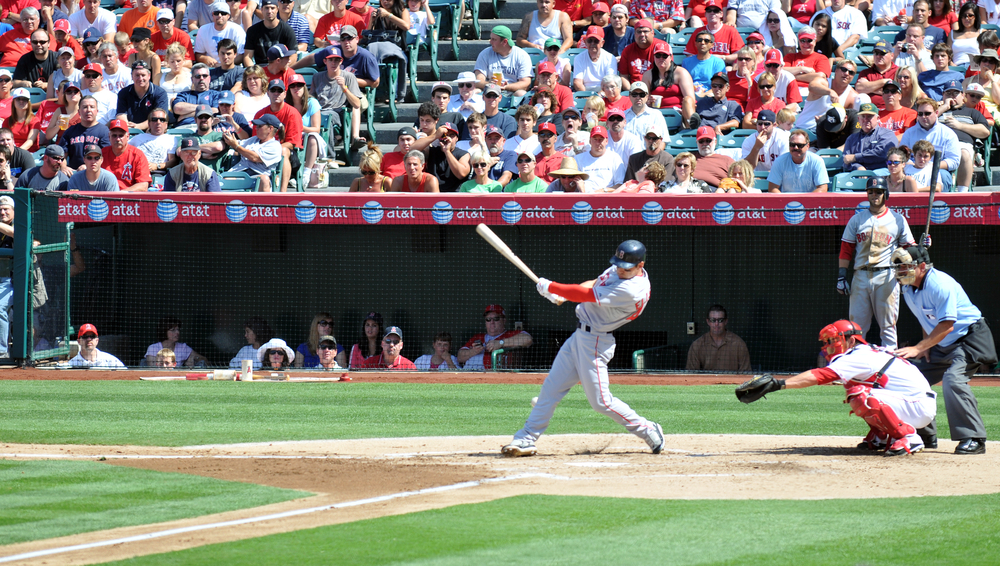 There is probably no greater example of the term “human capital” than high-priced athletes. A person that can throw a 95-mile-per hour fastball, toss a football 40 yards with pinpoint accuracy, or put a ball nine-inches in diameter through a hoop barely twice that size from 20 feet away is one of the most valuable assets on the planet. And as befitting this status, that athlete needs to be protected in the event that a serious, potentially career-ending injury interferes with their next big payday.
There is probably no greater example of the term “human capital” than high-priced athletes. A person that can throw a 95-mile-per hour fastball, toss a football 40 yards with pinpoint accuracy, or put a ball nine-inches in diameter through a hoop barely twice that size from 20 feet away is one of the most valuable assets on the planet. And as befitting this status, that athlete needs to be protected in the event that a serious, potentially career-ending injury interferes with their next big payday.One example is in major league baseball. It is a high-stakes playing field where the average salary in 2013 was just a tick over $3.2 million and everybody plays for that next big contract. But at what risk?
Case in point is former Boston Red Sox outfielder Jacoby Ellsbury. In 2013, the young player was in his free agent year making $9 million per season. After a slow start, his stats started to climb, leaving even the usually acerbic Boston Globe writer Dan Shaughnessy to comment, “It’s looking more and more like (agent) Scott Boras will be able to get $100 million for Jacoby Ellsbury.” But Ellsbury had been injury-plagued over the years, even missing practically all of the 2010 and 2012 seasons due to serious injuries. Without a new contract or any other protection in place, Ellsbury was basically performing a financial high-wire act from the moment the 2013 season began. Fortunately, he emerged unscathed and put up impressive numbers in a post-season that culminated in World Series championship for the Red Sox. Last December, his gamble paid off when he signed a seven-year, $153 million contract with the New York Yankees. If he had gotten hurt—whether it was trying steal third base or during a pickup basketball game at his local gym—a lot of money would have been left on the table.
Sometimes players forego their free agency eligibility by signing a one-year “pillow contract” after a sub-par season in the hopes that they can earn more money after a better year. In 2009, Seattle Mariner third baseman Adrian Beltre was looking at free agency in 2010, but his paltry statistics—eight home runs, 44 RBIs, a .265 batting average—would have easily negated a big payday. Beltre wanted the security of a multi-year deal, but the Mariners weren’t offering him one, so he signed a one-year deal with the Boston Red Sox at $9 million, with the intent of putting up monster stats and inking a multi-year deal elsewhere. It was a risk. If Beltre blew out a knee, his prospects for a multi-year deal would have been gone. Beltre ended up having a huge year for the Red Sox—28 homers, 102 RBIs, a .321 batting average—and the next year, he inked a five-year, $85 million pact with the Texas Rangers. Nevertheless, he would have been wise to put a disability insurance protection plan in place to maintain a comfortable lifestyle if his season did not go according to plan.
Disability coverage is for catastrophic injuries that could be career-enders. The level of coverage varies by salary, sport and the player’s position and their age. Starting pitchers in baseball and quarterbacks in football are among the highest compensated in their respective sport and thus have the most coverage. Coverage costs for an athlete earning $25 million-per-year can range from $350,000 to well over a million dollars a year. For the most part coverage is a 24-hour umbrella, meaning the athlete is covered whether he blows out a knee driving for a layup in Madison Square Garden or driving for a layup in his neighbor’s driveway.
Like any successful professional, an athlete’s greatest asset is their ability to play their sport and work in their occupation. Given the compressed career lifespan, disability insurance protection can be critical and each sport has unique characteristics to consider:
Baseball, Basketball and Hockey: MLB, NBA and NHL contracts are generally guaranteed for both death and disability risks. Disability insurance is critical for marquee players with considerable endorsement income, and is usually purchased at maximum available levels when players are headed into free agency and expected to sign large multi-year/multi-million dollar contracts. Collegiate athletes with first- or second-round draft pick expectations also need to secure protection against a disability that will prevent them from signing a professional contract in their intended sport.
Football: Except for a few truly standout players, NFL contracts are generally not guaranteed. If they can’t play, they won’t get paid. The average NFL career lasts only three years and most players will not achieve similar earnings outside of the arena after they hang up their cleats. So advisors working with NFL players should secure disability income protection to protect their expected income.
Golf and Tennis: There are no guarantees in golf or tennis outside of whatever might be negotiated with a sponsor. PGA and ATP professionals ranked in the Top 100 are generally considered insurable by the underwriters in this space. Advisors working with athletes in these sports should seek as much coverage as the player’s income can support.
Every time an athlete steps on a field, a court or the ice, they could be one step closer to a career-ending injury. As a result, an insurance policy that covers them against the loss of potential earnings can be considered every bit as important in protecting their livelihood as a face mask or a batting helmet.
